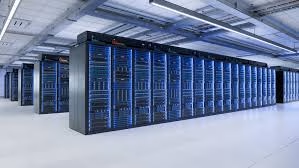Anthropic, the San Francisco-based maker of the Claude family of AI models, today announced it will invest $50 billion in a major U.S. data center buildout, starting with custom campuses in Texas and New York and “more sites to come.” The program — run in partnership with infrastructure provider Fluidstack — aims to supply the compute capacity needed for frontier AI research and commercial services, while creating roughly 800 permanent jobs and 2,400 construction jobs specifically for these initial campuses as facilities come online through 2026.
“We’re getting closer to AI that can accelerate scientific discovery and help solve complex problems in ways that weren’t possible before,” said Anthropic CEO Dario Amodei in the company’s announcement, adding that the facilities “will be custom built for Anthropic with a focus on maximizing efficiency for our workloads.” Fluidstack co-founder and CEO Gary Wu celebrated the partnership, saying Fluidstack was “built for this moment” because it can move quickly at gigawatt scale.
What Anthropic Said and What It Means
Anthropic’s newsroom post supplies the essentials: a $50 billion commitment, initial campuses in Texas and New York, a partnership with Fluidstack, and a timeline that has sites going online “throughout 2026.” The company framed the investment as part of a broader push to reinforce U.S. AI infrastructure and align with federal priorities on domestic AI leadership.
Industry analysts say the pledge is one of the largest single-company infrastructure commitments tied specifically to AI. Observers note that hyperscale and AI-focused data centers demand far more power, specialized cooling, and bespoke electrical infrastructure than traditional cloud facilities — requirements that can put pressure on local grids and require lengthy permitting and transmission upgrades.
Jobs, Timeline and Scale
Anthropic estimates the buildout will include approximately 2,400 construction jobs and about 800 permanent jobs once the campuses are online. It did not provide exact addresses for each site, nor a specific total megawatt capacity for each campus or a breakdown of the capital spending by state, only that the facilities are “custom built” for efficiency. Sites should come online through 2026.
Power and Permitting Questions
The announcement by the company does not specify energy sources, exact power requirements, or transmission arrangements-all details that large data-center projects usually attract scrutiny for because of their grid impacts. In the larger market, AI-era leasing has intensified, with major cloud and AI customers driving unprecedented growth in new data-center capacity across the United States. Energy procurement and interconnection timelines are expected to take center stage as Anthropic makes its way from announcement through groundbreaking into commissioning.
Industry Context and Competition
Anthropic’s move comes amid a wave of heavy infrastructure spending by cloud and AI companies racing to secure compute capacity. In a string of other multibillion-dollar investments, the announcement signals continued competition among AI firms vying to control lower-level infrastructure themselves, rather than depend entirely on third-party cloud providers. Owning or tightly controlling data-center capacity can lower the operating costs for training and inference at scale, improve performance, and offer greater control over sustainability and security measures.
Reactions and Implications
The filings, interconnection requests, and environmental reviews will likely be closely watched by local governments and utilities in Texas and New York that have a track record of housing massive data-center campuses. More public-private talks over permitting speed, grid upgrades, tax incentives, workforce training, and community impacts could well become a result of this announcement. Anthropic emphasized its intent to create American jobs and bolster U.S. competitiveness in AI.
Bottom Line
Anthropic’s $50 billion pledge ranks among the largest AI infrastructure commitments announced so far. Similarly, New York regulators’ approval of the Power Link to support Micron’s $100 billion semiconductor project highlights the critical role of energy infrastructure in enabling high-density compute and advanced manufacturing in the U.S. Now, attention shifts from big numbers to detailed issues: exact site locations, energy sources and agreements, utility interconnection timelines, and local permitting. These factors will determine how fast the new AI-era capacity becomes operational. By comparison, Project Stargate—developed by OpenAI in partnership with SoftBank, Oracle, and MGX Capital—with nearly $500 billion invested and plans for up to 10 gigawatts of AI compute capacity, remains the largest AI infrastructure project currently underway in the U.S., according to industry analysts.S.

Project Factsheet: Anthropic U.S. Data Center Buildout
Announcement Date: November 12, 2025
Developer: Anthropic PBC
Infrastructure Partner: Fluidstack
Project Scope:
Development of large-scale AI data center campuses
Initial sites in Texas and New York
Additional U.S. sites planned in future phases
Total Investment: Approximately $50 billion
Construction Timeline:
Start: Late 2025
Initial facilities expected online by 2026
Facility Features:
Purpose-built centers optimized for AI workloads
High-efficiency, scalable design
Custom infrastructure for Anthropic’s Claude AI systems
Employment Impact (Initial phase):
About 2,400 construction jobs
Around 800 permanent operational roles
Energy and Infrastructure:
Power-intensive campuses integrated with regional grids
Details on energy sourcing forthcoming
Potential inclusion of renewable and low-carbon power supply
Sustainability Goals:
Energy-efficient design principles
Commitment to responsible, low-emission operations
Economic and Strategic Significance:
Among the largest AI infrastructure investments in U.S. history
Expands domestic compute capacity for advanced AI research
Strengthens local economies and high-tech employment
Projected Completion: Phased commissioning through late 2026

